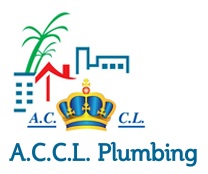In today’s competitive business landscape, building strong relationships with customers is crucial for driving growth, loyalty, and revenue. Customer Relationship Management (CRM) is a strategic approach that helps businesses manage interactions with customers and potential customers. In this article, we’ll explore the key aspects of CRM and how it can benefit your organization.
What is CRM?
CRM is a technology-enabled strategy that helps businesses:
1. Manage Customer Interactions: Track customer interactions across multiple channels, including phone, email, social media, and more.
2. Analyze Customer Data: Analyze customer data to gain insights into behavior, preferences, and needs.
3. Personalize Customer Experiences: Use data and insights to deliver personalized experiences and build strong relationships.
Benefits of CRM
1. Improved Customer Satisfaction: CRM helps businesses understand customer needs and deliver personalized experiences, leading to increased satisfaction and loyalty.
2. Increased Sales: CRM provides insights into customer behavior and preferences, enabling businesses to identify new sales opportunities and close deals more effectively.
3. Enhanced Customer Retention: By building strong relationships and delivering personalized experiences, businesses can reduce customer churn and increase retention rates.
4. Better Decision-Making: CRM provides valuable insights and data, enabling businesses to make informed decisions and drive growth.
Key Features of CRM
1. Contact Management: Store and manage customer contact information, including names, addresses, and phone numbers.
2. Sales Force Automation: Automate sales processes, including lead tracking, opportunity management, and sales forecasting.
3. Marketing Automation: Automate marketing campaigns and track customer interactions to measure campaign effectiveness.
4. Customer Service and Support: Provide exceptional customer service and support through multiple channels, including phone, email, and social media.
Implementing CRM
1. Define Your Goals: Clearly define your CRM goals and objectives, including improving customer satisfaction, increasing sales, or enhancing customer retention.
2. Choose the Right CRM System: Select a CRM system that meets your business needs and integrates with existing systems.
3. Train Your Team: Provide comprehensive training to ensure your team understands how to use the CRM system effectively.
4. Monitor and Measure Performance: Regularly monitor and measure performance to identify areas for improvement and optimize your CRM strategy.
Conclusion
Customer Relationship Management (CRM) is a powerful strategy for building strong relationships with customers and driving business growth. By understanding the benefits and key features of CRM, businesses can deliver personalized experiences, improve customer satisfaction, and increase sales. By implementing a CRM system and following best practices, businesses can reap the rewards of a well-executed CRM strategy.
References:
[1] Salesforce. (n.d.). What is CRM?
[2] HubSpot. (n.d.). CRM Guide.
[3] Microsoft Dynamics. (n.d.). CRM Solutions.

